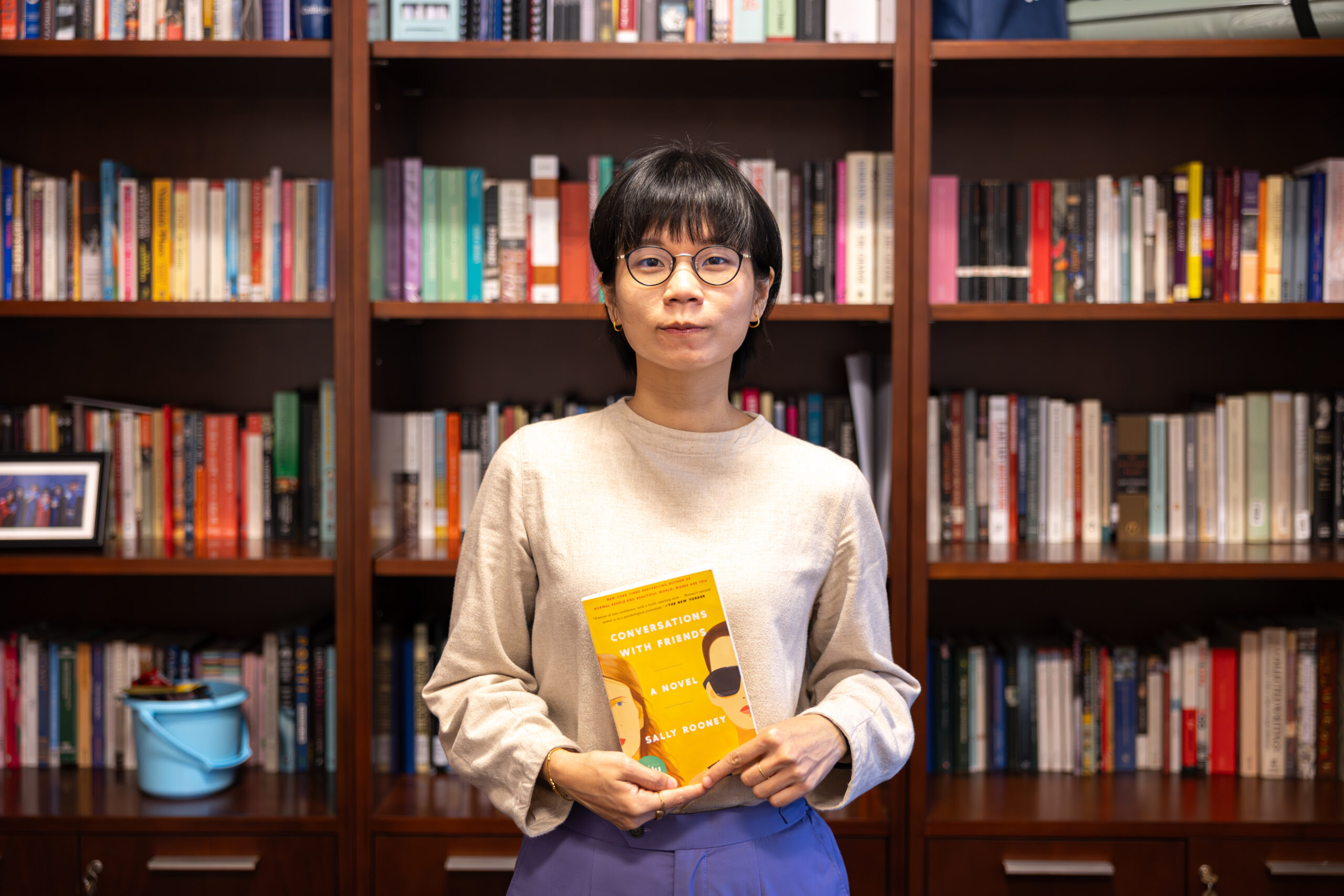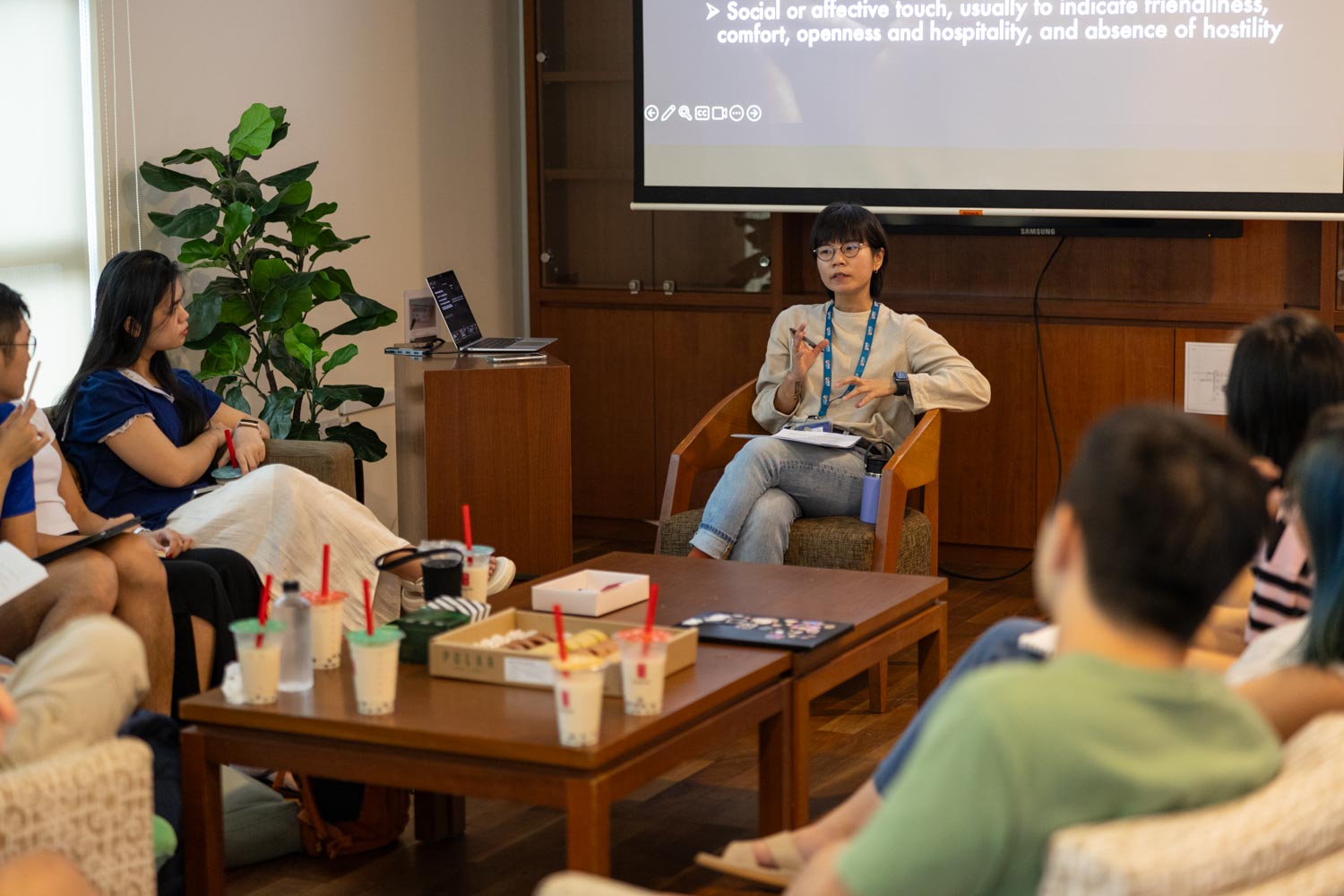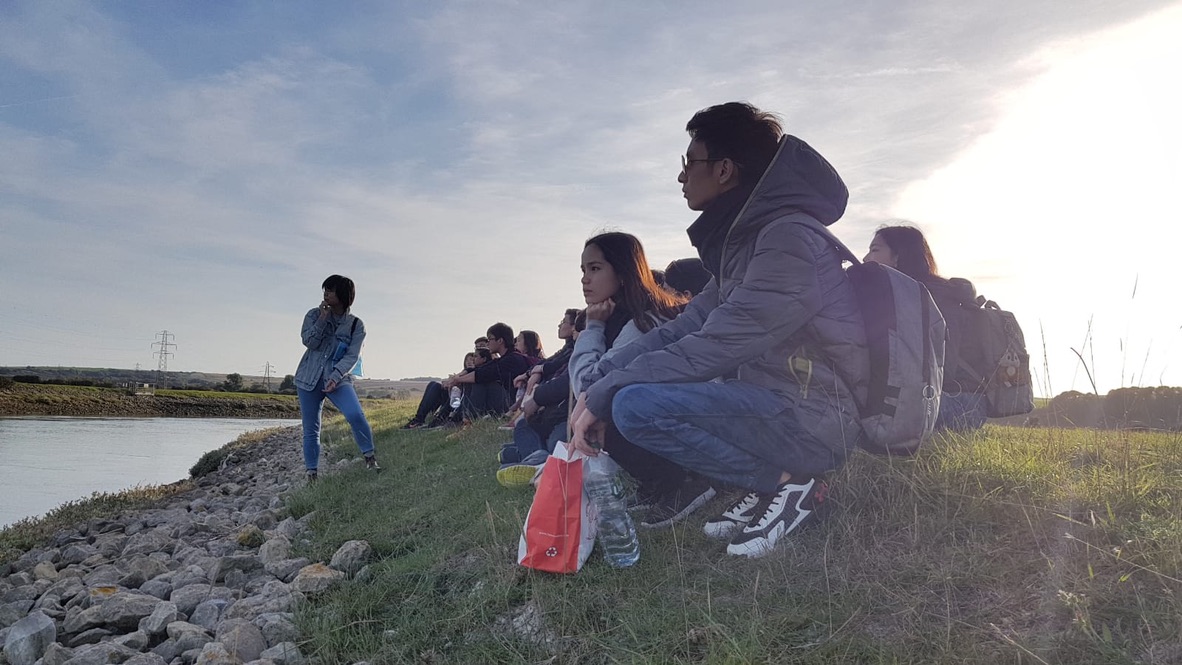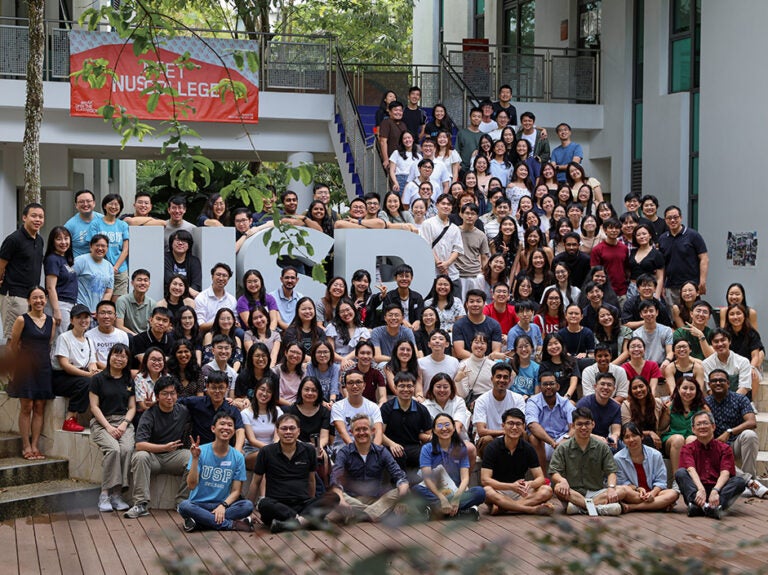In this faculty feature, we caught up with senior lecturer Dr Carissa Foo who is teaching the course “Brevity of Love: (Short) Storytelling” this semester. She also talks about her Brainfood+ session, and reflections on SingLit.
Dr Foo completed her Ph.D. at Durham University, where she researched twentieth-century women’s writing and its dialogues with spatial theory and queer studies. She has published on modernist women’s writing, is the author of two novels, and the recent short story collection, No Wonder, Women.
By Zheng Chengzhi ’23 and Chloe Yung ‘24

Hi Dr Foo, could you tell us more about yourself, and what you’re working on right now?
I’m a fiction writer and literary critic. I also teach at NUSC now.
Currently, I’m working on the manuscript of a story about two people trying to work on languages and the lapses of languages. That’s a little vague, but that’s where I am now – just at the start of the manuscript. The story is a romance of sorts, not so much between the protagonists: one of whom is an academic, and the other an “Amanuensis” – a literary transcriber, or literary secretary, but between them and language.
You’re invested in feminist phenomenology and twentieth-century women’s writing. How did your passion for these fields come about?
It started with working on modernist women’s writing as an undergraduate. Back then, before reading modernist writing, I was just reading Victorian novels – realist novels that are largely quite dense. These novels charted the entire life [of a character] from their infancy till their death. For me, that was just not as interesting.
I remember walking into an introduction class to modern women’s writing, which I didn’t know anything about. In class, we read a 120-page book that focused on six hours of a woman’s life. I thought, “Oh, it’s so slim. It’s only six hours, and that’s enough to portray a character?” That’s where my interest in modernism came in.

You’re teaching a course titled “Brevity of Love: (Short) Storytelling” this semester. What advice would you give to students looking to explore creative writing?
Be attentive to your thoughts, feelings, and ideas. Take an inventory of your thoughts and write them down, even if it’s just a silly thought. Then, in your own time, explore [these thoughts] in ways that are both personal, but also counter-personal.
The thoughts that come to you are quite instinctive, so just jot them down. But in your personal reflection, try to counterpose these thoughts to see what alternative stories can come in, and what other experiences might colour these thoughts.
So are you an advocate of keeping a separate notebook for purely creative ideas?
Yeah. You can also write it on your phone, or even talk to a friend about it. Of course, sometimes in the moment you get swept away and then you don’t really bring it up. Thus, I think jotting it down and writing it in the notebook or your phone can be helpful.
Your Brainfood+ session is on the book Conversations with Friends by Sally Rooney. What are some of the themes and ideas in the book you plan to explore with students?
I think that in many literary contexts and cultures, love is often trivialised. Or rather, any narrative of love in a formal way is always trivialised, because it’s often thought of as emotional. Or, in times of distress and war, nobody really has or is in the mood to talk about love or emotions.
But love studies and narratives of love, they seek to illustrate that, no, love is not trivial. Eileen Chang wrote that in love, one is more innocent and violent than in war can ever bring us to. That’s very poorly phrased – but basically it is the thought that in love, we can actually discover one’s most innocent and one’s most violent aspects of oneself.
From a more aerial perspective, I’m interested in [exploring] the genre of the millennial novel. This is an emerging genre, and I think Sally Rooney fits right in there. It’s written by a millennial, about millennials. There’s a particular kind of profile that’s associated with the characters – in many of these novels, the characters are super self-deprecating and self-sabotaging. When you’re reading, you’re just angry and mad at them and think: why are you like that?
But it functions as a kind of catharsis, right? Nobody wants to be wallowing in self-pity. When you watch someone else wallowing in self-pity, there’s catharsis. And so, we continue reading.
You’ve taught experiential learning courses in London and Tokyo, exploring subjects like “Narrating the Body” and “Narrating the Modern City.” What insights do these hands-on experiences provide when learning literature?
When you read a novel that’s written in the 1920s, often you think of it as encased, fossilised in someone’s memory, as though you’re entering a world that is not yours.
During one of my experiential learning courses, I took students to the southeast of London, and they saw the places in which these books were written. The landscape that the characters walked across appeared before their very eyes.
An experiential trip adds to the aesthetics presented in the narrative. The narrative paints the space in a way that is aestheticized, because that’s what literature does – it aestheticizes the space and imagines it for the reader. But when you’re there, you get a material, lived engagement with the place.

What does “aestheticized” mean, in this context?
Let’s say, if you see something that’s purple in colour, you just say it’s purple. But the modernists might talk about lavender, the shade of pink that is closely associated with this particular hue of purple. They can wax lyrical about something.
Of course, you know – it’s purple. But my sense of purple, my experience of purple, in that moment is very different from, say, someone from the 21st century. And then they might take a whole paragraph to describe that. Essentially, you aestheticize, or you make beautiful, you make sublime.
Do you have any advice for writing SingLit?
What Singapore needs now for anyone who wants to write SingLit, is to write. This sounds very simple. But, for every one Gatsby, you have 10,000 novels that we don’t hear of. The thing is, we don’t have that human resource yet; we’re in this productive phase where you have to keep generating material. If you’re in a place where there’s a dearth of works, no filtration is going to happen. In a country that is so young, you do need production. And so, the ability to be able to publish anyone’s (even a young person’s) works – which may or may not be good – is something, because at least we can put it into the archive and see what happens.
How should we write in a way that is SingLit? If you grew up with or if you’re acquainted with a particular culture, you will be imbibed by its cultural forces, right? You don’t need to question that your perspective is suddenly Westernised because you’ve grown up in Singapore, even though your experience might be Anglicised. So, it’s always already local, or indigenous or native, for lack of a better word.
What writers need to do is to read widely, and I don’t mean just reading the canon. You need to read works from different continents, works in translation, deliberately exposing yourself to works that are not in the canon. And that’s where you can get different vantage points. As writers, people think you write to represent realities. I don’t think that’s true, because you can’t accurately represent a reality — you can only write what you think is most true to your experience and you translate it into characters.
On that note, what are some of your favourite SingLit books?
Oh, my favourite local novel is Death of a Perm Sec by Wong Souk Yee. Initially, when I picked it out, I thought it’d be a political novel. But what really got me was the familial tensions and hurt that ensued in the aftermath of the death of a person.
I also really like Inez Tan’s This is Where I Won’t Be Alone, which is a line from Kit Chan’s Home. It’s a short story collection I enjoy, because it offers a range of thematic explorations and some magic realism as well.
I think O Thiam Chin’s Now That It’s Over is also pretty good. Narratively, it has interweaving vignettes told from the perspective of two lovers who have lost, or who are unsure of, the whereabouts of their beloved because of the 2004 Tsunami in Phuket.
* The interview above was edited for length and clarity.
Keen to find out when our next outreach engagement session is? Join our mailing list!


